

home
performance
direction & choreography
research
teaching
nihon buyō & noh
![]()
![]()
![]()
Selected Direction & Choreography
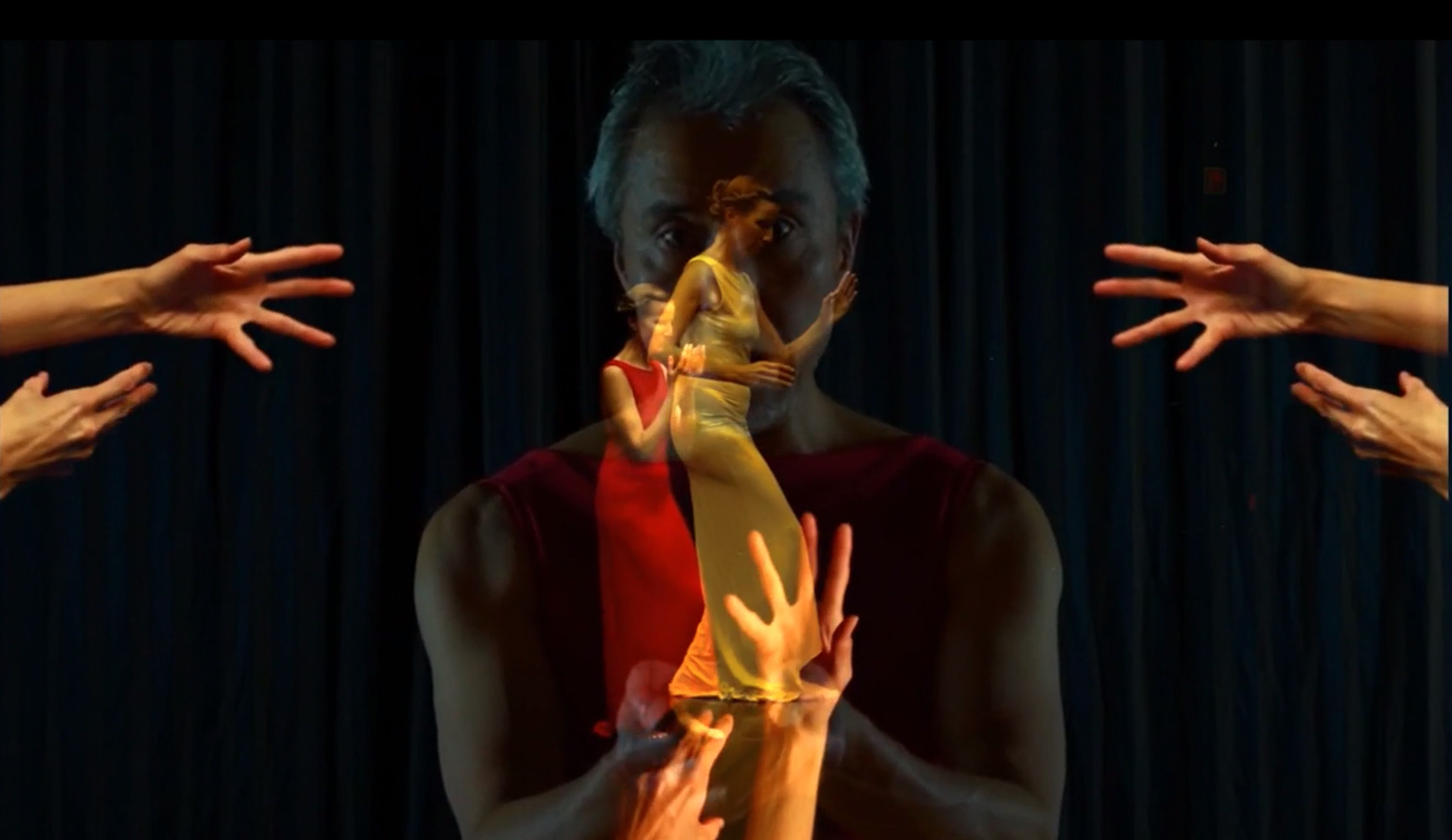 |
(Digital) Lady M TomoeArts. Direction: Colleen Lanki. Digital Design & Manipulation: Kanon Hewitt. Dance. Theatre. Video. Interactive Technology. Set to Jennifer Butler's composition For Dreams of Things that Cannot Be. A look at the act of grasping for power through the letter scene of Shakespeare's Macbeth. More info on the show. |
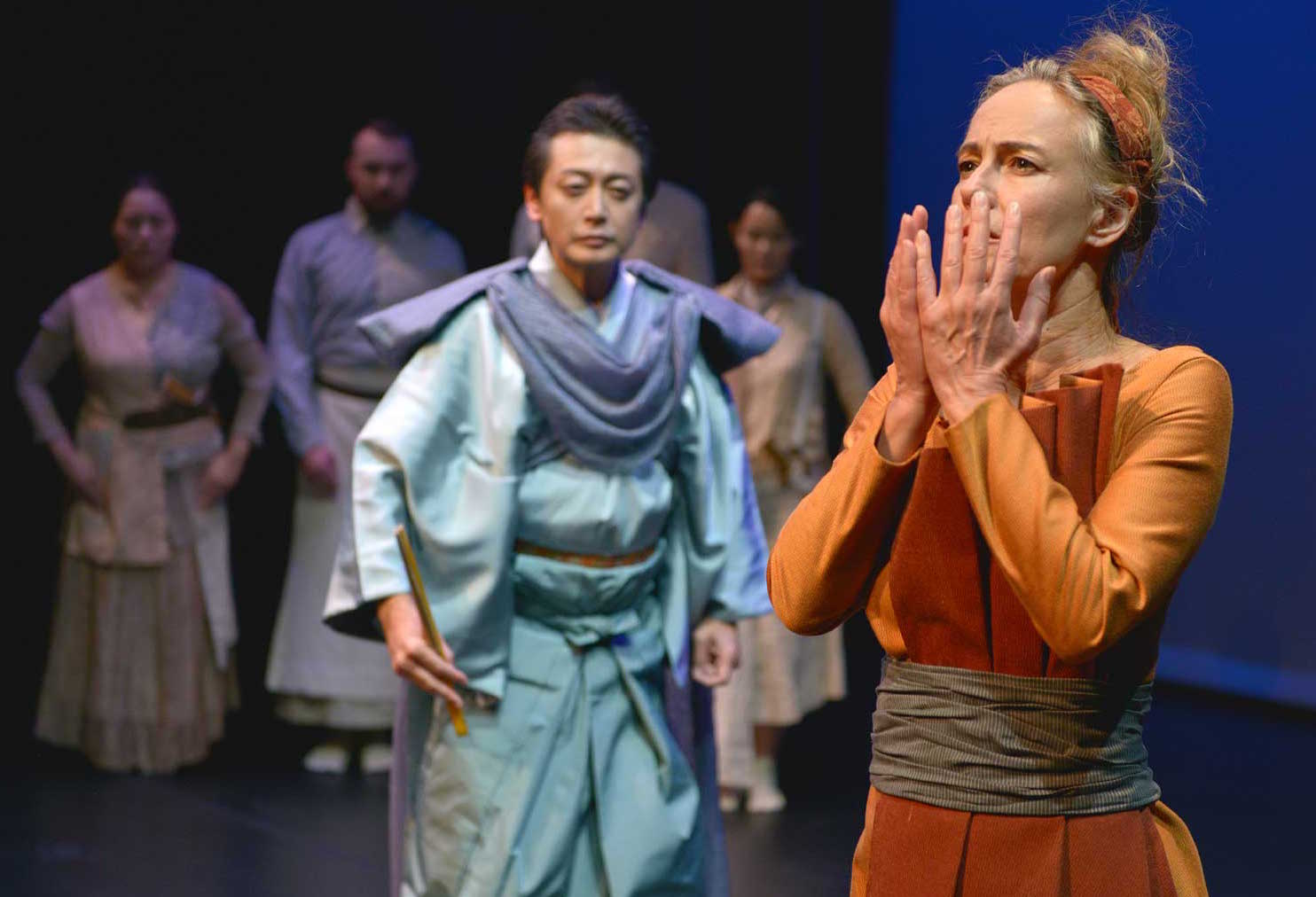 |
Kayoi Komachi/Komachi Visited TomoeArts. Composed by Farshid Samandari. Libretto and Direction: Colleen Lanki. Music Direction Jonathan Girard. Design by Ines Ortner. A three-year odyssey to create this chamber opera which premiered in October 2017. A contemporary (sort of) retelling of the noh play Komachi and the 100 Nights, this opera wove together classical music and noh chant. Starring Komparu noh actor Yamai Tsunao and soprano Heather Pawsey, the opera also involved a chorus of four (with two female noh actors) and an orchestra of six. More info on the show. "...a production that will make you rethink what opera can be"- Schmopera |
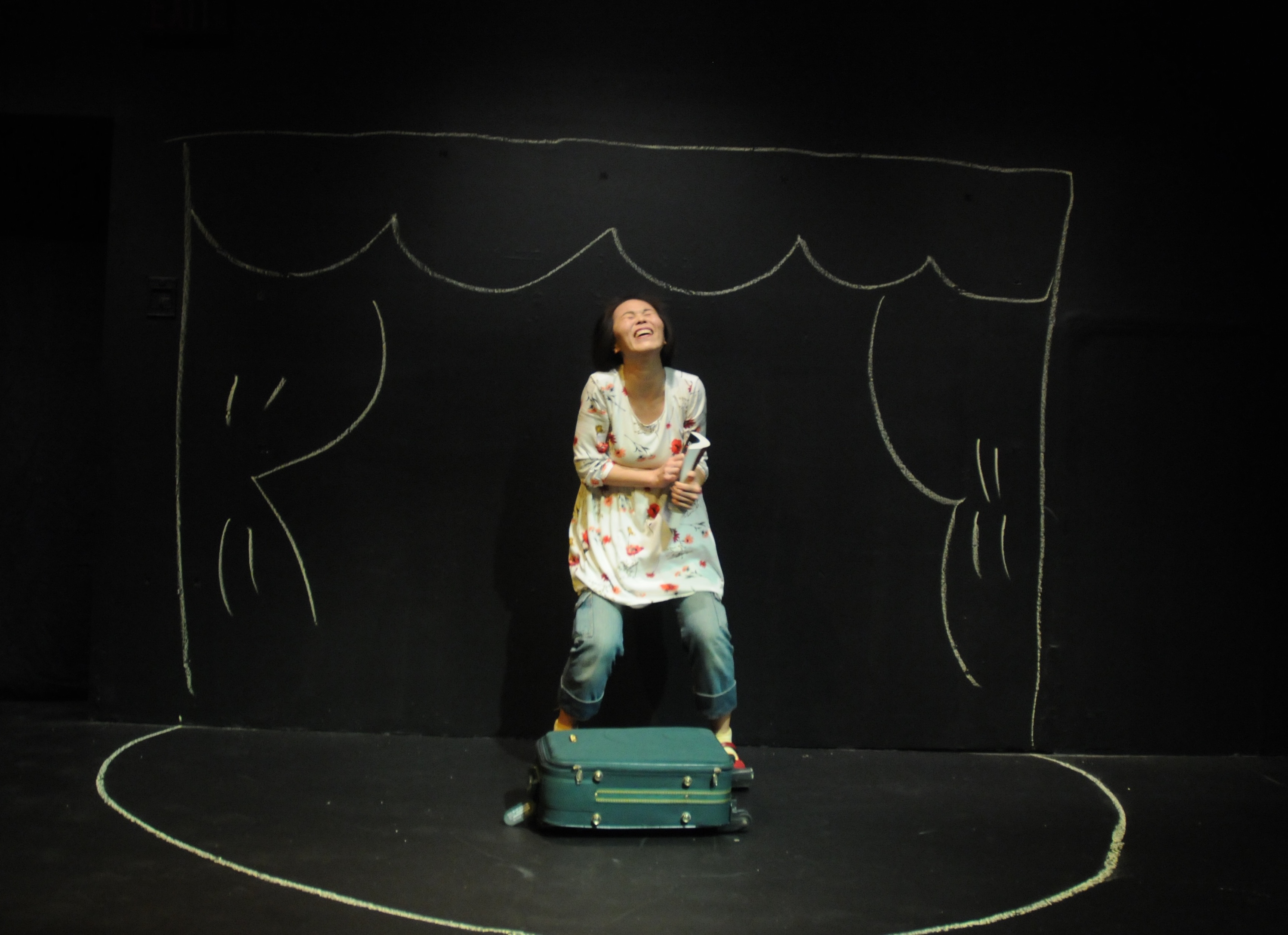 |
Suitcase Stories Pacific Theatre By: Maki Yi. Direction: Colleen Lanki. Lighting Design by Chengyan Boon. Funny, touching and a tour-de-force performance by Maki Yi in her one-women show about her adventures coming to Canada. I chose to make this play all about the suitcase...and have everything that appears onstage come from Maki and her luggage. This show is full of crazy characters, a greyhound bus and lots of sidewalk chalk. Two remounts and a BC tour. "Story in a suitcase..."- Article in The Source/La Source |
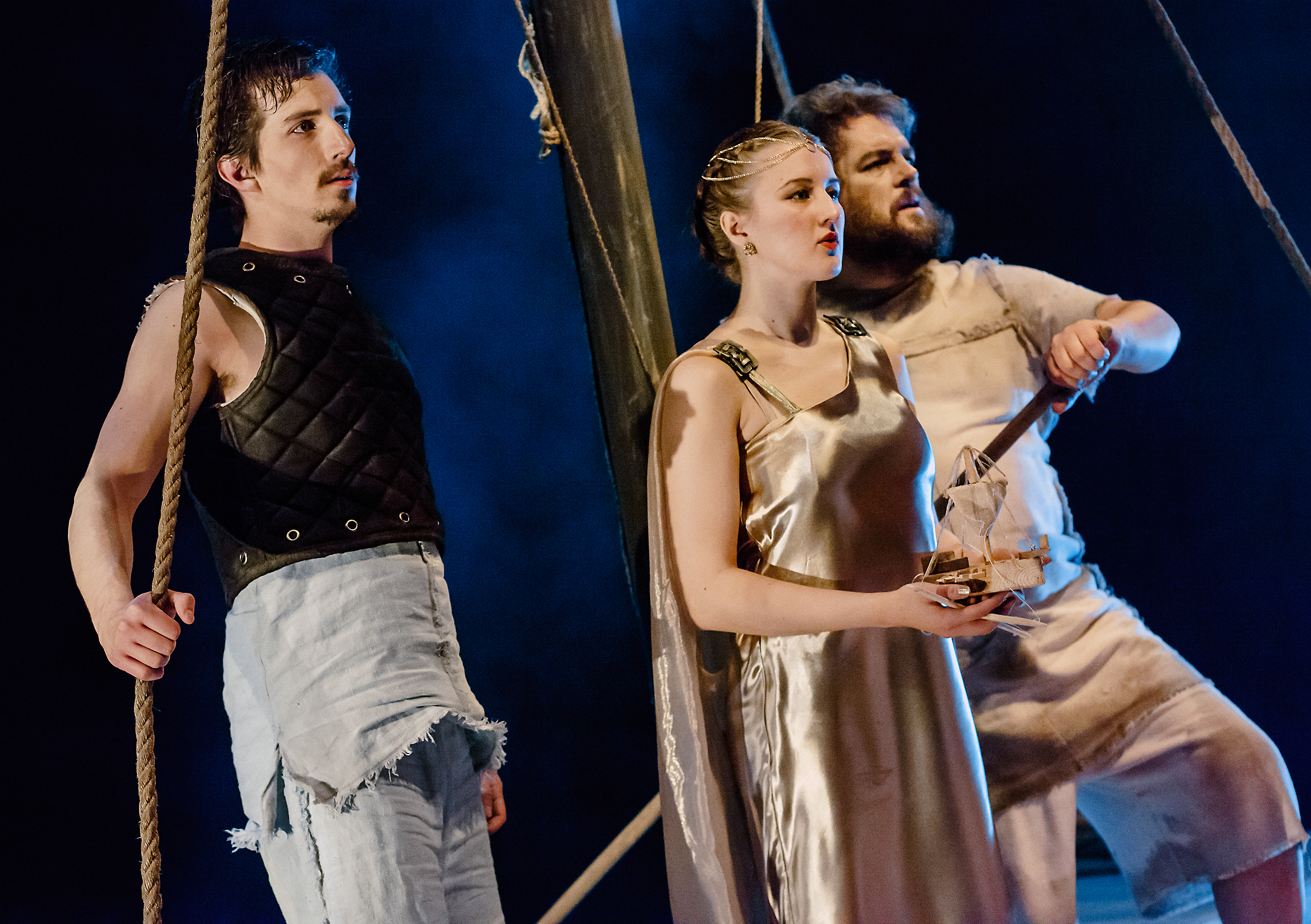 |
Argonautika University of the Fraser Valley. By: Mary Zimmerman. Direction: Colleen Lanki. An incredible ensemble piece full of adventure, physicality, passion and fun. This was a terrific show to work on with a group of amazing young actors and designers. I loved this talented group of sailors... Video trailer of the show |
 |
Weaver Woman TomoeArts. Choreography: Colleen Lanki. A blend of live music, spoken text based on O-Chonghui's short story Chingnyo, a contemporary take on the myth of The Weaver Girl and the Cowherd. Movement was based on Japanese classcial dance, but extended far into physical storytelling and dance-theatre. Video excerpts of the show "People in the audience were so touched they cried." - Vancity Buzz "A visual and aural extravaganza." - Beyond YVR "An exhilarating experience" - Review Vancouver |
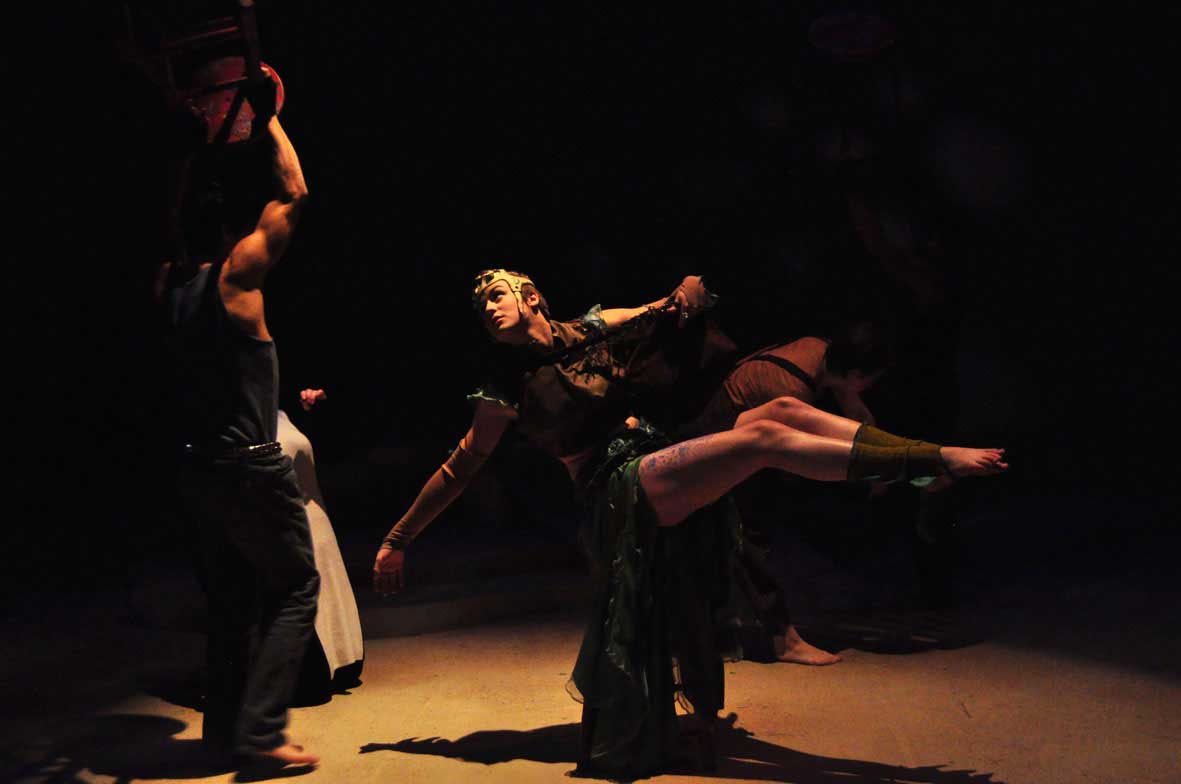 |
The Little Mermaid University of the Fraser Valley. By: Pam Gems (based on Hans Christian Andersen). Direction: Colleen Lanki. A gorgeous version of the original tale that focuses on the Little Mermaid's personal choices and inner strength. Dark, humorous and full of fabulous physical scenes of shipwrecks and sea palaces. Using a large ensemble of student actors we created a world of BC Coast sea creatures, a three-headed Sea-Witch who inhabited the Great Pacific Garbage Patch, and a contemporary West Vancouver "Palace" for a keel-boat racing prince. |
 |
Thread Hell The University of Hawaii. Direction: Colleen Lanki. Written by: Kishida Rio. Translated by Tsuneda Keiko and Colleen Lanki. The English language premiere of Japanese avant-garde playwright Kishida Rio's masterpiece Itojigoku . I had the glorious opportunity to be a guest artist at the U. of Hawaii in Spring 2013. The show was a manic and crazy ride - but ultimately won Po'okela Awards (Hawaii Theatre Award) for best costumes, lights, sound and overall production. See a video excerpt here. . . . a mind-bending evening of surreal theatre expertly interpreted and performed - Scott Robertson, Hitting the Stage 16 April 2013. Complex, metaphorical, confusing and powerful . . . - Nicolyn Charlot, KaLeo April 2013. |
 |
Shadow Catch Produced by Pro Musica Vancouver. Composers: Jennifer Butler, Dorothy Chang, Benton Roarke, and Farshid Samandari. Libretto: Daphne Marlatt. Direction: Colleen Lanki. Musical Direction: Marguerite Witvoet. In this chamber opera set in Oppenheimer Park, a young runaway encounters fours spirits of beings with connections to the history of Vancouver's oldest neighbourhood. A tale of a young man's coming to face himself through meeting the spirit of "place" and confronting his fears. The libretto was built with noh structure, and I used elements of noh movement pattern and gesture as well as the space-time concept of "ma." More Info: Shadow Catch Blog |
 |
EN: a raincity street dance TomoeArts and Dancing on the Edge Festival Concept and choreography: Colleen Lanki A combination of Japanese classical dance influenced movement, an original score featuring taiko, shakuhachi and biwa, and projected photographs of people and places in the heart of Vancouver's oldest neighbourhood commissioned from a team of Hope in Shadows community photographers. EN is a celebration of how people are linked to each other over time and space, and how the souls of all generations have danced in the rain of Vancouver. More Info: Tomoe Arts. |
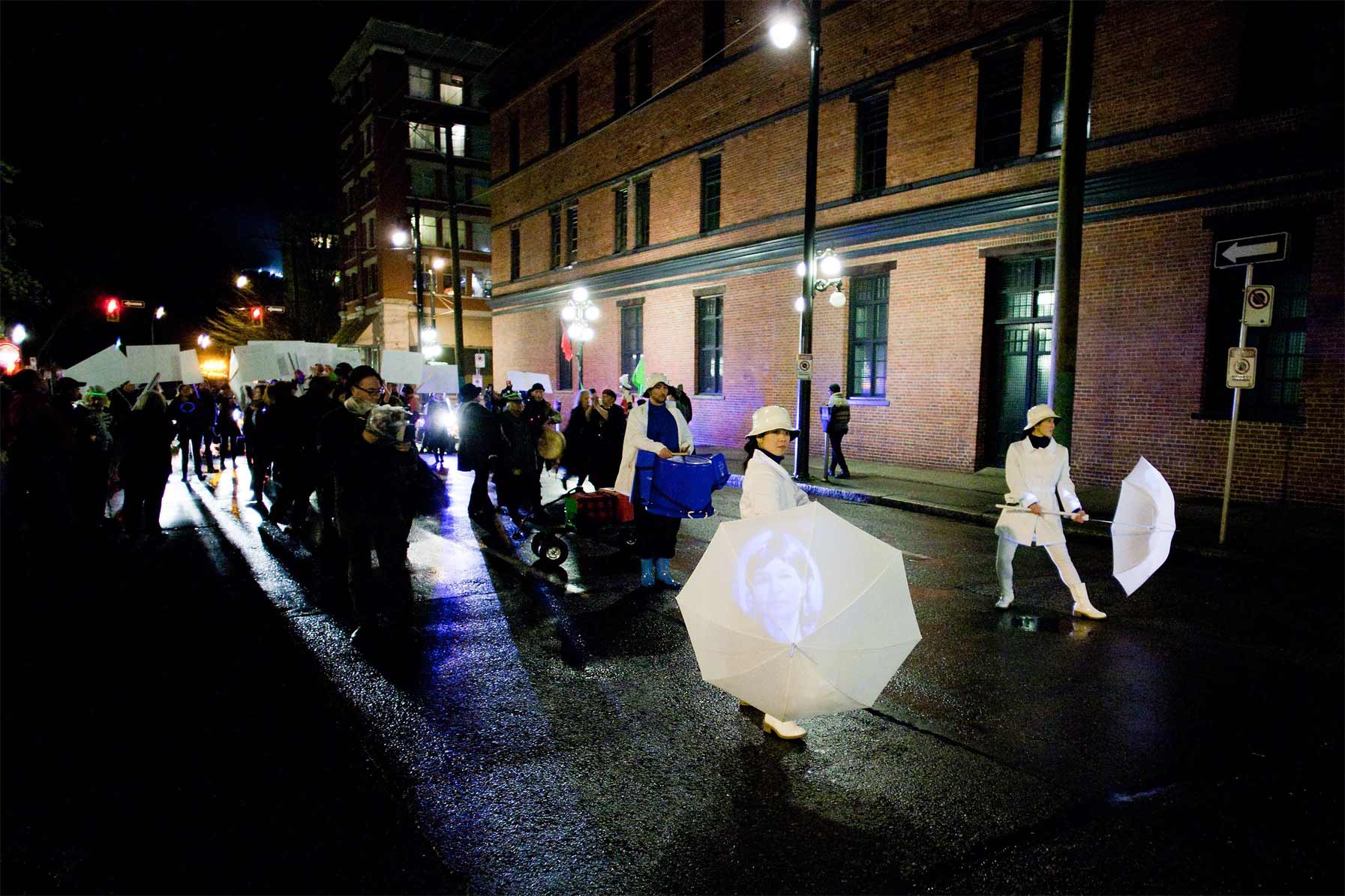 |
EN (circle/fate) Concept and choreography by Colleen Lanki. Music Composition & Performance by Eien Hunter-Ishikawa, Design by Yulia Stern. Featuring dancers: Tami Mukai and Maki Komori. Part of LIVE's Procession of Performing Circles curated by Glenn Lewis. EN (circle/fate) is about the circular nature of lives, relationships and history. It was created as a short dance for a public art event in which six Vancouver groups come together to light up a few blocks of the Downtown Eastside with music and performance. EN combines Japanese classical dance influenced movement, taiko percussion (played on large plastic tubs!) and projected photographs of local faces. |
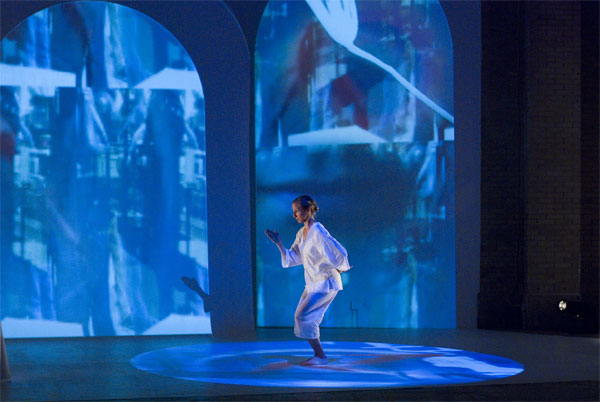 |
Ten Nights of Dream Created with Alcvin Ryūzen Ramos and Matthew Romantini. With projections by Craig Alfredson, David Kim, Yulia Shtern, and Ana Louisa Espinoza Vaca. Concept and choreography by Colleen Lanki. Composition by Alcvin Ryūzen Ramos. Direction by Matt Romantini. A full-length dance-theatre piece based on Sôseki Natsume's haunting series of tales Ten Nights of Dream combining movement, electronic and acoustic music, text and projections. Full stage projections add to the uncanny world of the dreams. More Info: Tomoe Arts. Read about the show in The Georgia Straight. |
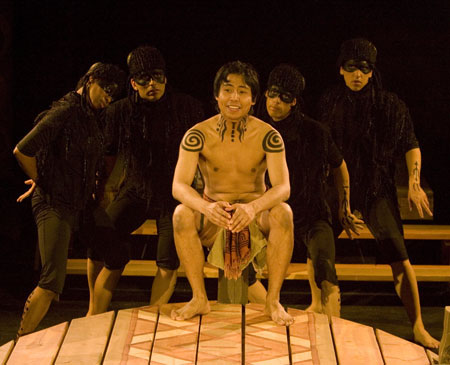 |
The Eighth Land Written by: William Maranda. Directed by: John Wright. Movement/Choreography by: Colleen Lanki. For Pi Theatre at PerformanceWorks, May 2008. An environmental tragedy set on Easter Island...with an array of Gods and Goddesses and an amazing chorus of Flies and Fleas. Music by Pepe Danza. Some reviews: ...Colleen Lanki's choreography provides the evening's most exciting moments. Colin Thomas. Georgia Straight 22 May 2008. ...beautifully choreographed by Colleen Lanki. Jerry Wasserman. Vancouver Plays May 2008. |
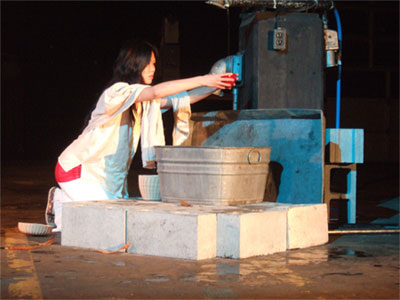 |
The Water Station Written by: Ō ta Shōgo Co-directed with Sachiyo Takahashi Ōta Shōgo's 1980s masterpiece is a play that explores the human voyage through a landscape of desolation. It is a play without words - an embodiment of Ōta's "living silence." Performed at the Great Northern Way Campus as part of a performance/design course which focussed on the aesthetic principles of ma, jo-ha-kyū, and yūgen. |
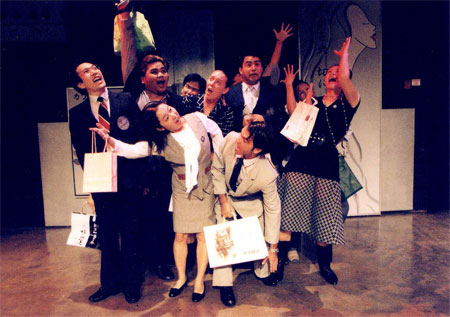 |
MORAL Written by: Kisaragi Koharu Co-translated with Tsuneda Keiko This is Japanese playwright Kisaragu Koharu's 1980s expressionist masterpiece. The production was the first time any play of Kisaragi's has been produced outside Japan, and the first publication of any of her work in English. MORAL blended realistic acting techniques with stylized movement and vocalization. Direction of the piece relied heavily on the use of Viewpoints. |
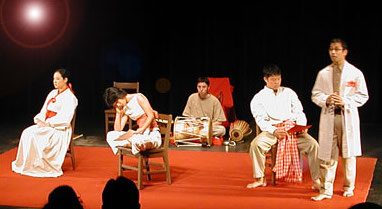 |
Bloodline Written by: Eunsook Kim, Khetphet Phagnaysay, Norman Muñoz, Chihiro Hosono, and Colleen Lanki A collaboratively written and created piece dealing with culture, heritage, and blood. The piece combined percussion, projections and a variety of performance techniques. It was performed in: Korean, Laotian, Japanese and English. |
 |
The Lone Tusker Written by: K.N. Pannikar The Lone Tusker is South Indian playwright and director K.N. Panikkar's exploration into the individual in society. The lead character is a kutiyattam actor who leaves society to explore the forest, and ends up building a new "house" with the wild spirits living there. This production involved actor/dancers from a variety of disciplines: hula, Tahitian dance, and bharatnatyam and explored the splitting or connection of voice and body, having separate actors embody either the voice or body of a single character. |

